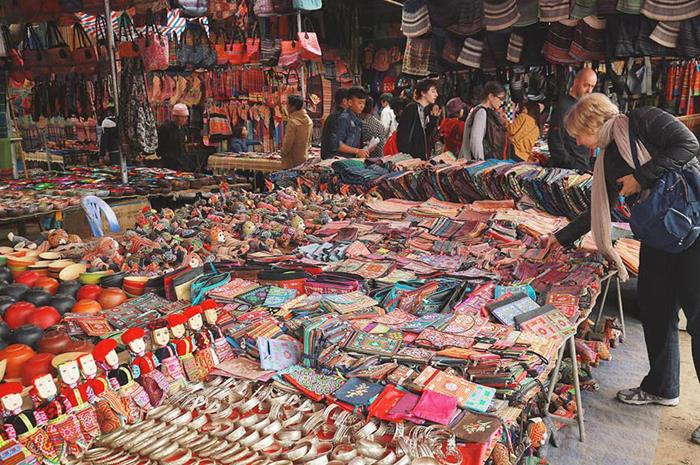Located in the northern part of Lào Cai province, Bac Ha Market has long been known as a center for trade and cultural exchange among the ethnic minorities of the mountainous areas. Not only is it a place for the exchange of goods, but Bac Ha Market also embodies the soul and cultural identity of life in the highlands.
1. Unique Products from the Highlands
Bac Ha Market offers a wide variety of goods, ranging from fresh agricultural products and food to traditional handicrafts. The agricultural section attracts many visitors with its herbal medicines, fresh vegetables, fruits, and famous specialties like Bac Ha corn wine, which is distilled from corn using a secret recipe passed down by the H’Mong people. Additionally, traditional clothing, brocade fabric, and handmade silver jewelry are popular products.
2. Market Space – A Cultural Hub
The atmosphere of Bac Ha Market is not only a place for trading but also a gathering point for ethnic cultures. The H’Mong people in their colorful traditional attire and the Dao people with their bright red headscarves create a lively and vibrant ambiance. Locals come to the market not just to buy and sell but also to meet, chat, and participate in community activities, showcasing the solidarity among the ethnic groups.
3. Horse Market and Livestock Area
One of the unique features of Bac Ha Market is the horse market, where locals come to buy and exchange horses. This area is also interesting for visitors, as they can witness how locals conduct transactions and choose horses for agricultural purposes. The livestock section includes other animals such as pigs, buffaloes, cows, and dogs, all serving the agricultural needs and daily lives of the people.
4. Cultural Tourism Experience
For tourists, spending a day at Bac Ha Market is an opportunity to learn more about the lives and cultures of the mountainous people. After visiting the market, tourists can explore the Hoang A Tuong Mansion—an outstanding historical site in the region—or visit H’Mong villages to discover their simple yet rich lifestyles.

